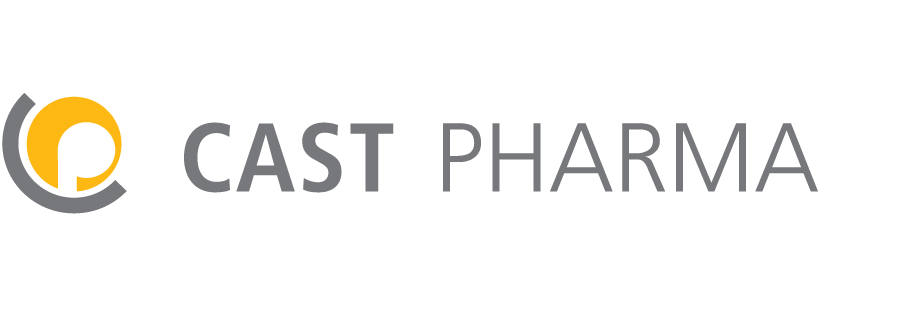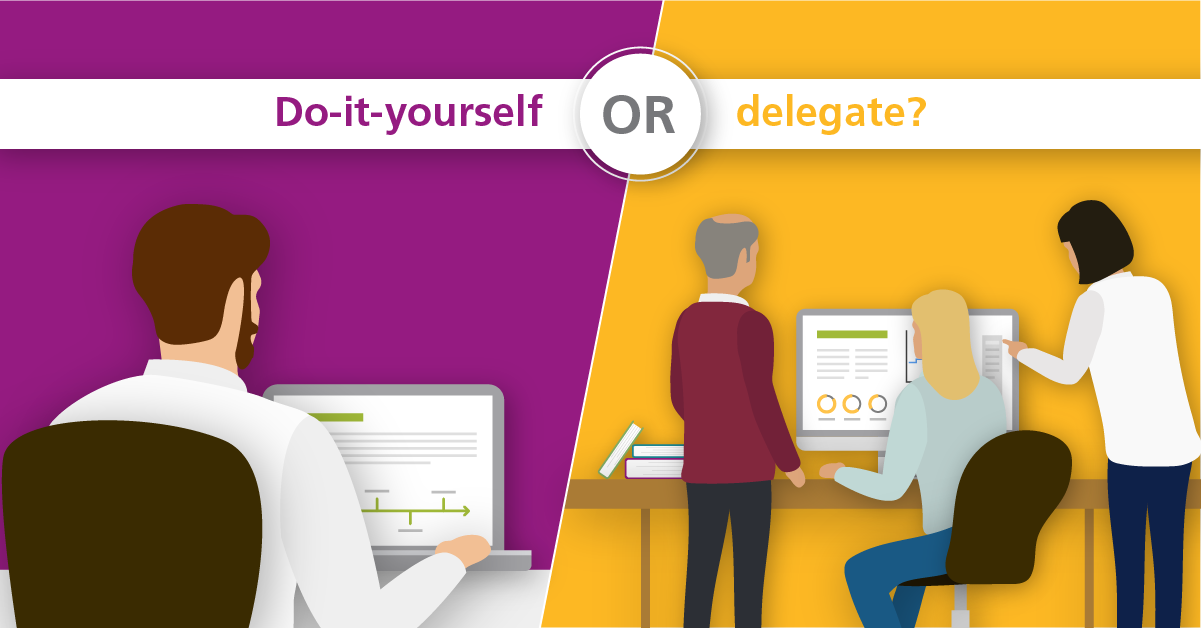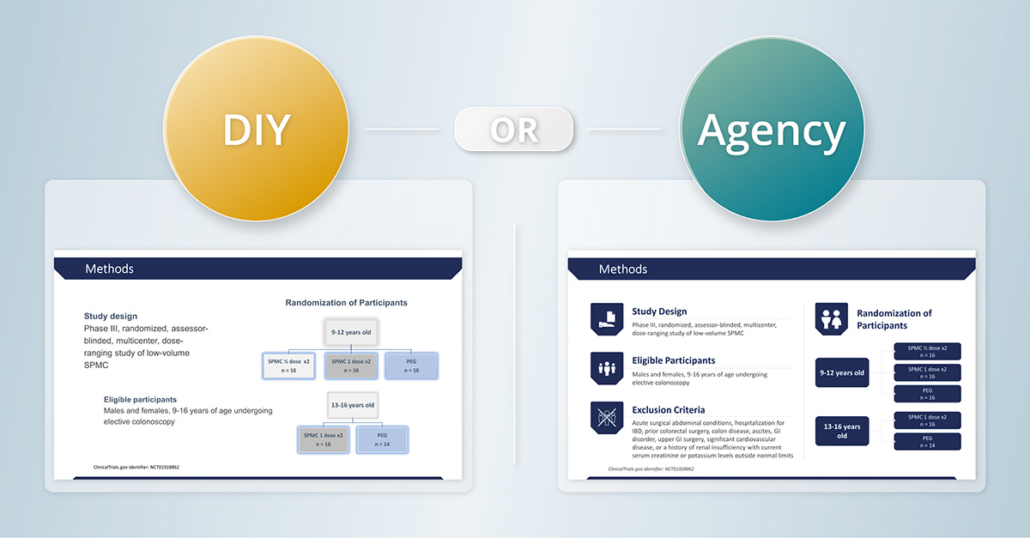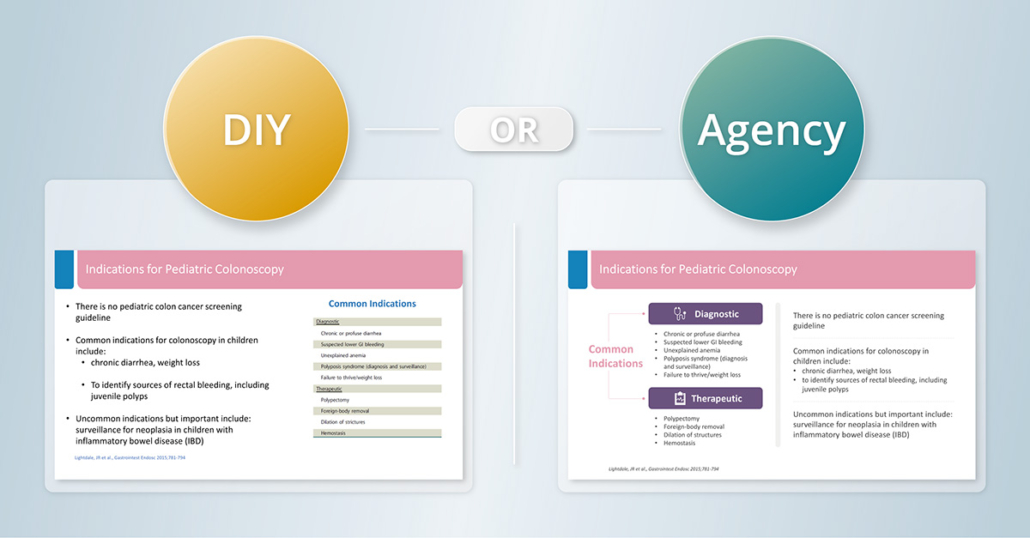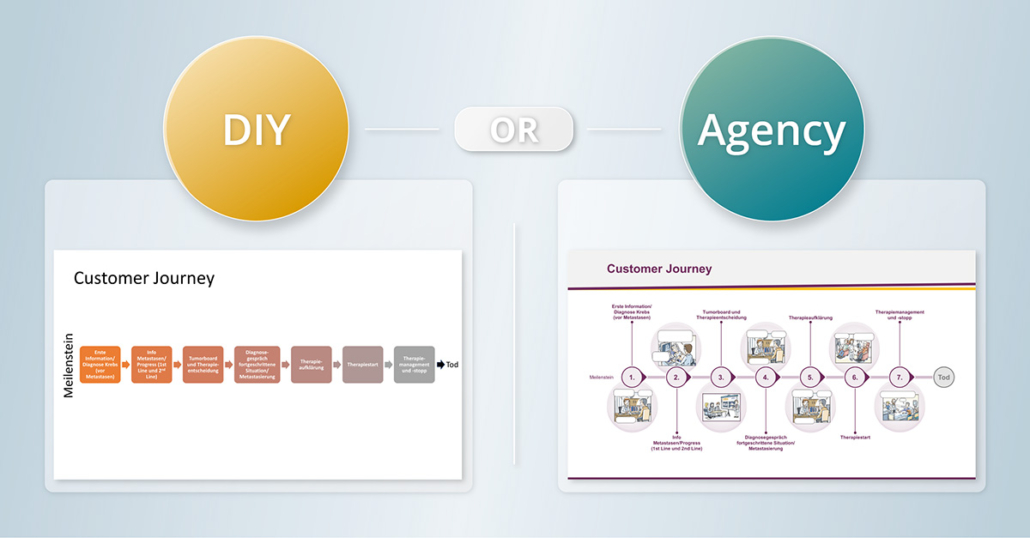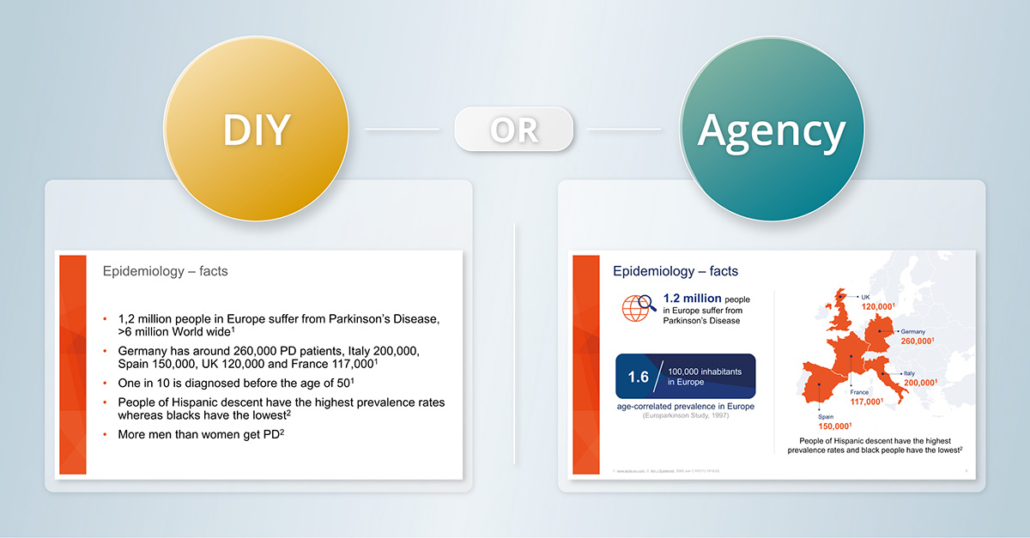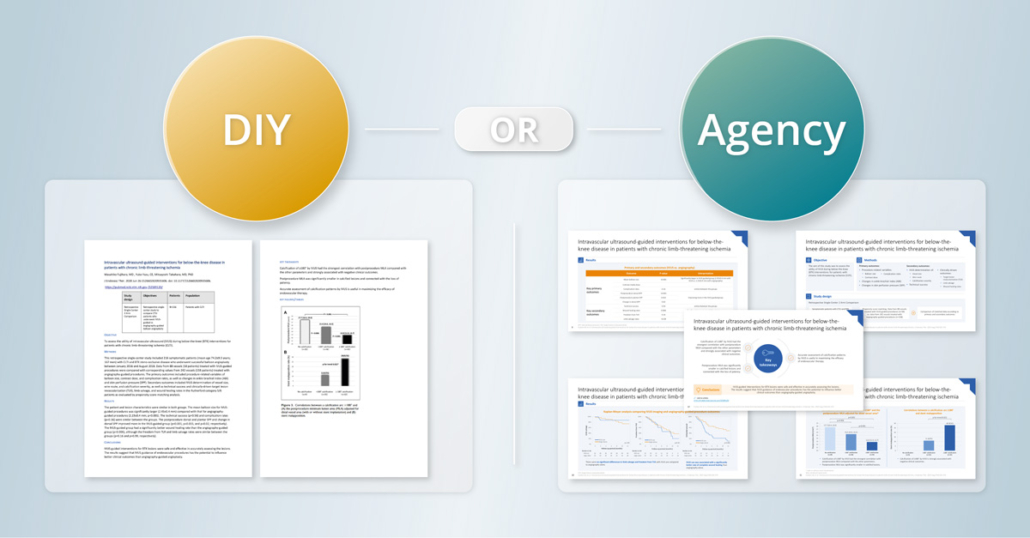Do-it-yourself or delegate? The question of creating a scientific slide deck
If you work in pharma, you know slide decks are the mainstay of scientific communication. They allow companies to relay complex medical ideas in ways that are digestible and easy to understand. Making a basic slide deck is relatively easy. PowerPoint is user-friendly, and pharma companies have robust scientific knowledge in-house. So why would anyone outsource their scientific slide decks to a visual storytelling agency? Here are some points to consider when you need to decide if it’s better to develop a slide deck yourself or it’s better to work with an external agency.
The dynamic-static content spectrum
First consider the dynamics of the information contained within the deck. How subject to change is this information? For example, when creating an initial, exploratory concept to discuss several options for an investigational compound with your R&D team, the information is highly subject to change in the near future. DIY could be best approach here, as the info will require alignment and buy-in from internal stakeholders, and the deck itself may rapidly evolve in a matter of days or weeks.
There are other circumstances, however, where the information may be more static. Take, for example, a slide deck presenting clinical trial results that have already been published. Your team will definitely want to review the slide deck as it is being created, but by and large, the big questions such as the trial’s endpoints, design, and methods have been nailed down. Decks like this are much easier to send to an agency. You could even have your partner agency start a deck like this when your clinical study report is close to being final.
Getting the right ideas to the right people
No matter who your audience is, your ultimate goal is to make complex ideas more digestible and accessible to them. But the time and effort needed depend on two factors: your proximity to your audience and to the slide deck’s user. Let’s say you need to quickly explain to your boss how KOLs on a recent ad board responded to a draft scientific platform for an investigational compound. You are the user (can’t get more proximate than that!) and your boss is probably someone you speak to relatively frequently. In this case, you know the target audience so well that you are probably the best person to explain your message. And since you’re the only person who will use the slides, you won’t need to worry about making them easily usable by different users.
But what if you need a slide deck for MSLs to give physicians the pathophysiology of a rare disease? You probably know some of the people who will use the deck on a first-name basis, but there are many others, perhaps internationally, whom you will never meet. Likewise, you will likely not have direct contact to the target audience. Breaking down complicated concepts requires a high level of both scientific expertise and creativity. So, making a slide deck with a clear story flow that can easily be used by many different people and for a diverse audience is a job that would be best suited for an external vendor. Some other examples are decks for KOL use, self-study modules for training, or congress booth presentations. These all just have to work for the audience and user “right out of the box” without any additional instructions from you.
A quick knowledge drop or a big splash?
Context matters. If your slides are for an annual meeting, congress, or even an internal onboarding session, you want to make sure you put your company’s best foot forward. On occasions where you’re not expecting a big audience and your reach is somewhat short, making your deck yourself is probably okay, especially if you know a thing or two about design. But occasions where you really need to make an impact, especially when your deck will be seen by an external audience, you will probably want to work with a team graphic design expertise as well as the scientific knowledge to make your key messages pop.
The lifespan of a slide deck
Whether you’re presenting at a congress, hosting online meetings with HCPs, offering your new recruits an eLearning, or delivering an industry theater presentation, you need to consider how many times a deck will be used and the duration of time it will be used. A DIY approach may be the good option when the deck is for one-time use with a relatively small audience. However, delegating content creation is a much better choice when your company will use the deck repeatedly for several months or even years. The longer the deck is used, the larger the audience becomes, and the higher the payoff.
That being said, even if the deck is used once for a specific congress or meeting, the slides may be recycled for a number of different decks, audiences, and occasions. When your slides effectively capture the key message and are well designed, they are more likely to have a longer lifespan. So partnering with a team that knows how to effectively use design for scientific communication will make your deck last longer.
If you want something done right, is it best to do it yourself?
Making a slide deck yourself gives you complete control over the process and the final outcome. You won’t need to brief an agency and then give them feedback on their work. And there are no third-party costs. However, you know how time-consuming and resource-intensive developing scientific material can be. Doing a deck yourself may free your budget up for other activities, but it has opportunity costs. Are there other ways you could be spending your time that will bring bigger returns for you and your company? If the answer is clearly no—it’s a slow week, your budget for the year is spent, you’ve got nothing better to do—then doing it yourself could be a good way to go.
If you delegate creating a slide deck to an agency, you will have more time for more important tasks that only you can do. At its core, outsourcing saves time. In addition, vendors bring expertise that you may not have in-house, such as professional design ability and tools. Of course, you will have to spend some time on briefing and giving feedback. So it is worth doing the math and seeing if the number of hours you need to brief and give feedback would be more or less than the number of hours you would need to do-it-yourself.
Who to team up with
Whether you decide to DIY or delegate, there are several things to consider when developing scientific material. People working on the content should be well-versed in the nuances of medical information, as your deck needs to be accurate and, depending on your role, non-promotional. The team also needs to be able to tell a good, scientific story by breaking down complex concepts to increase accessibility and help the audience remember key takeaways.
So, what’s the verdict?
Who a company chooses to develop its medical material will depend significantly on the project’s goal. However, when the decision is made to delegate, a company should always find the right partner specializing in scientific communication and graphic design.
